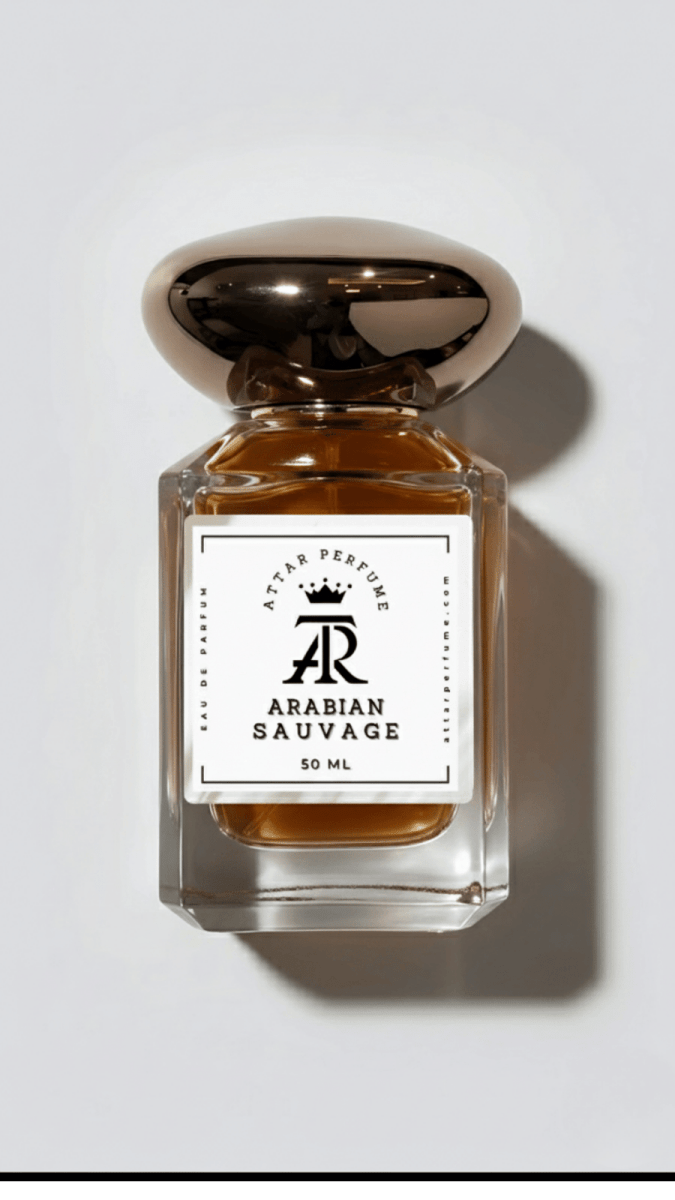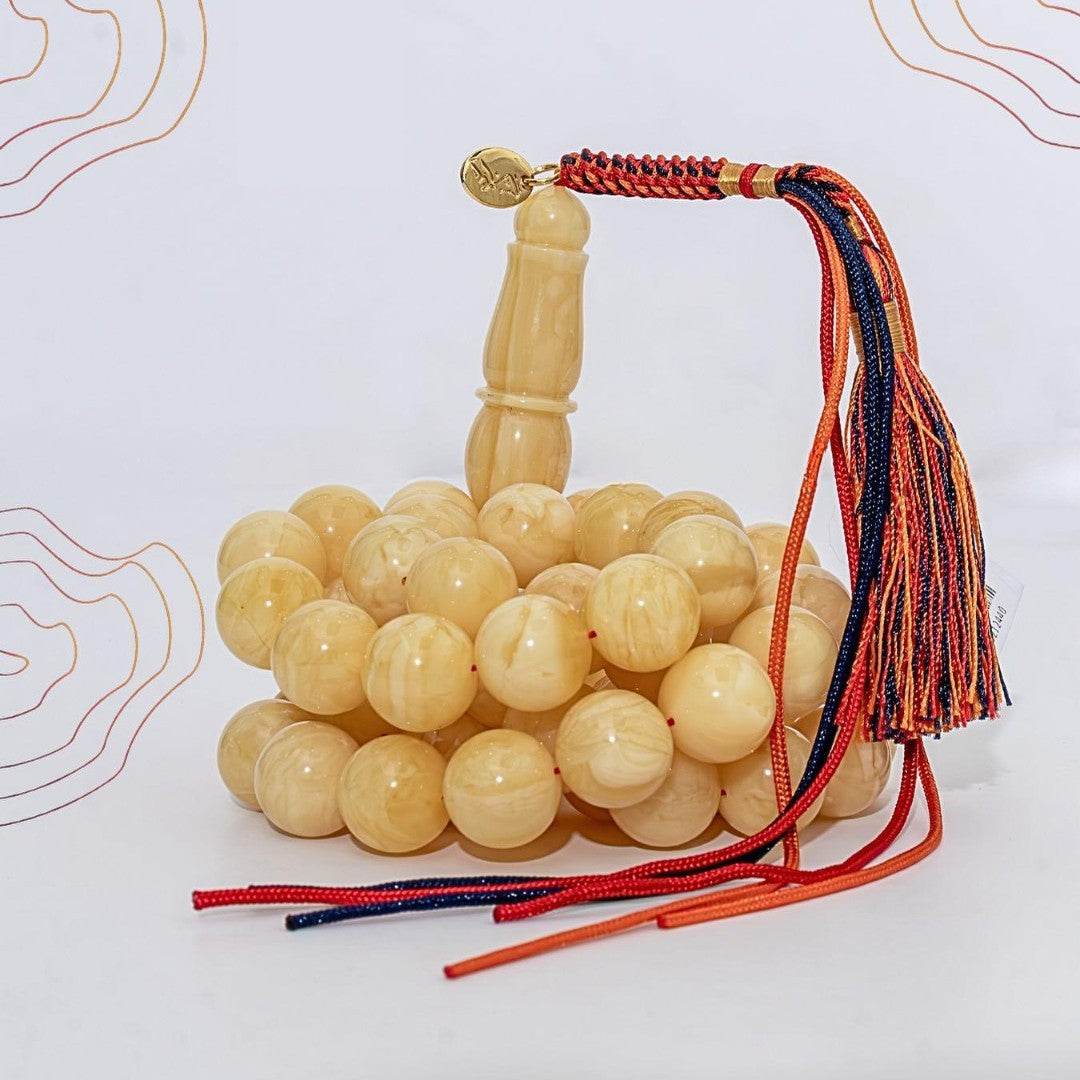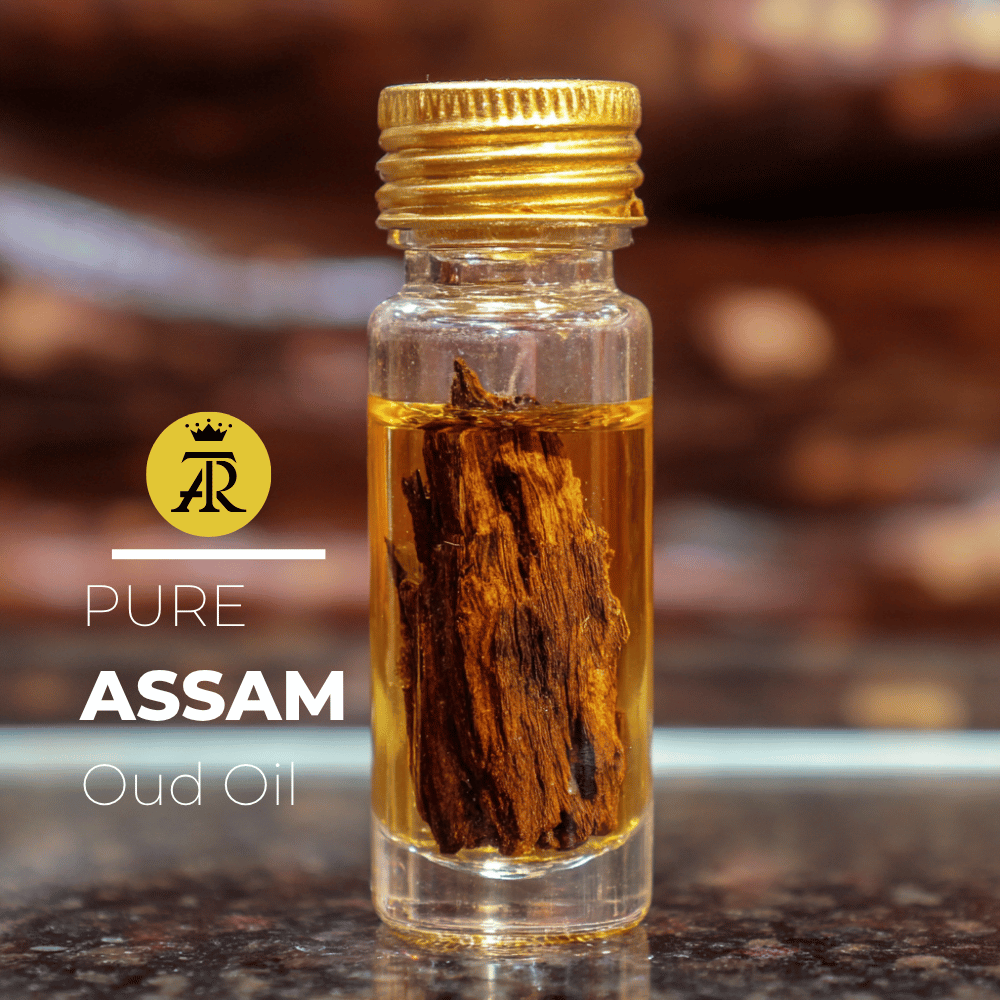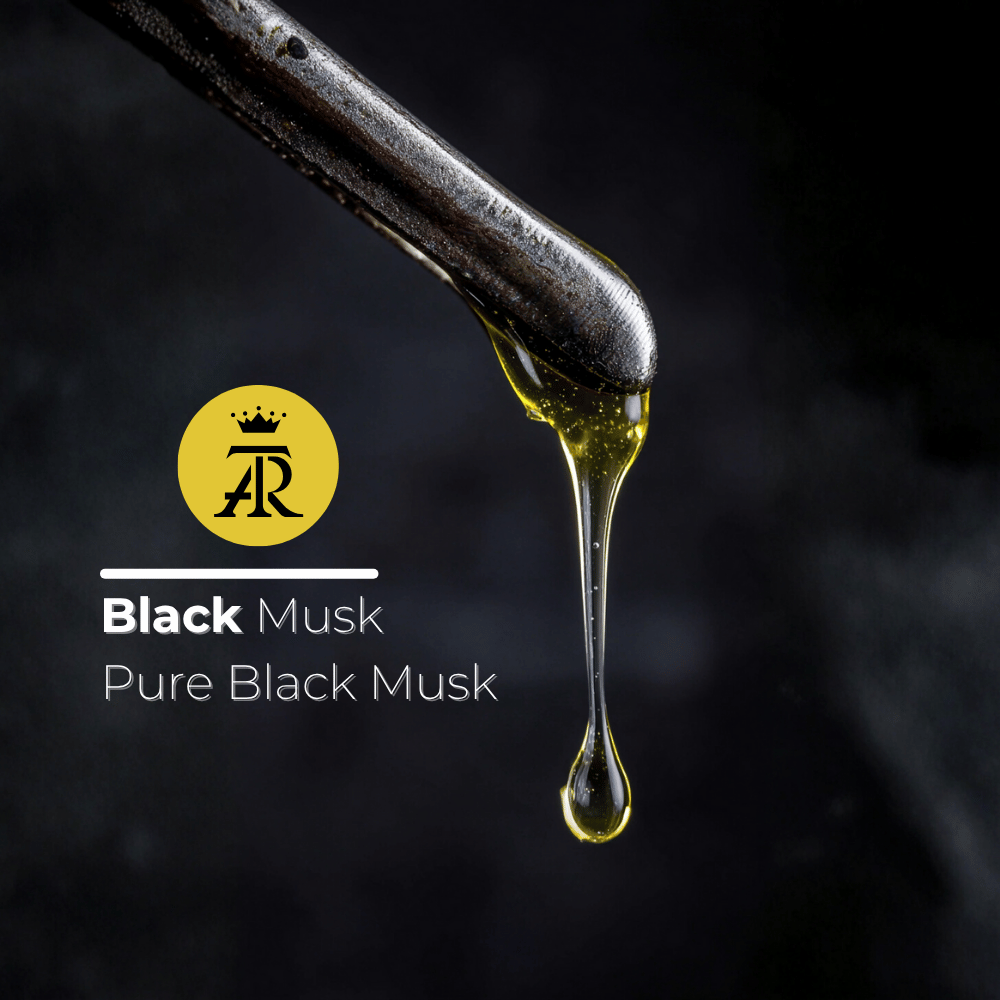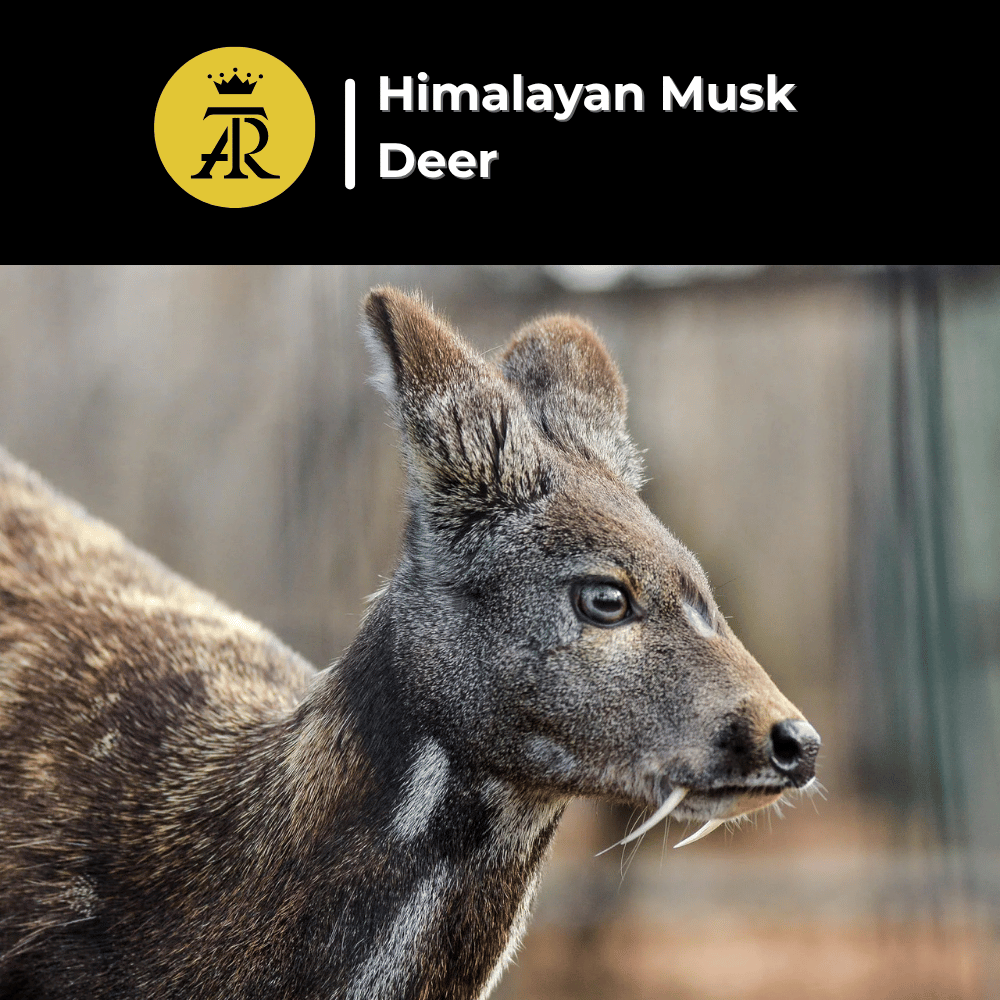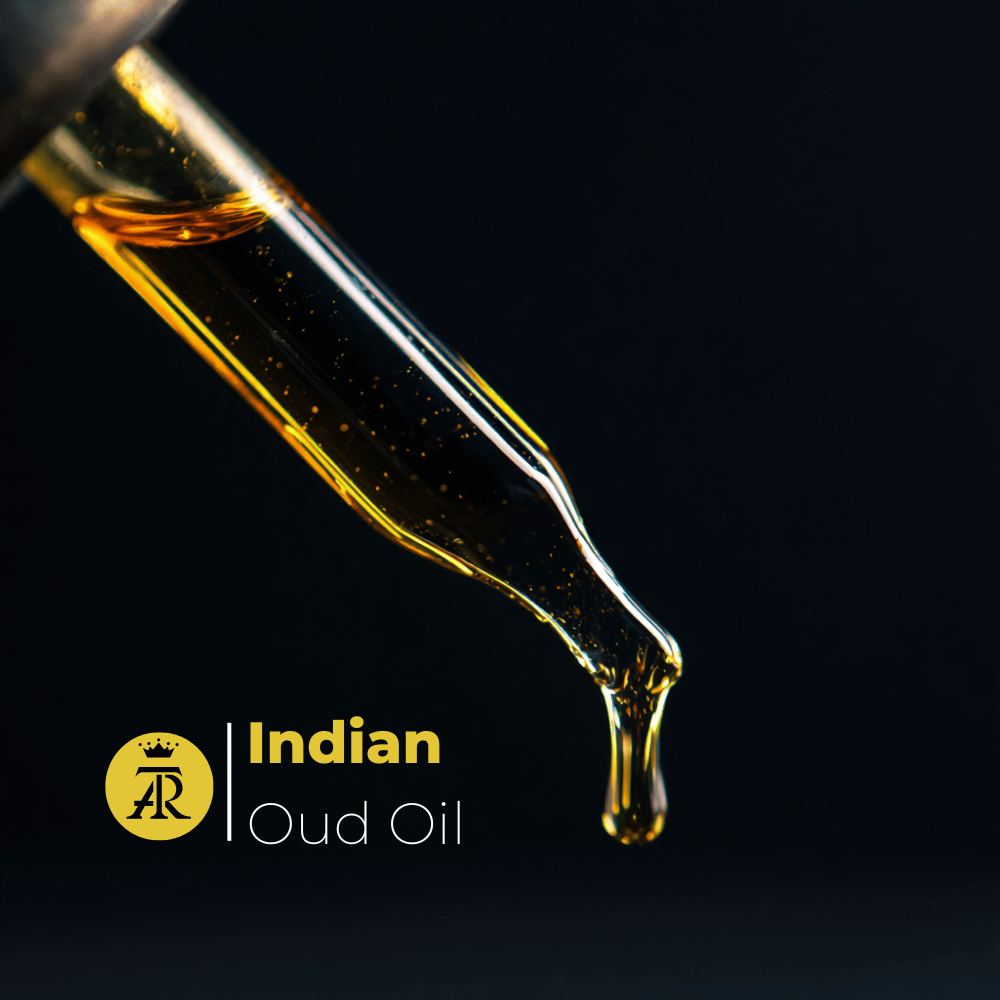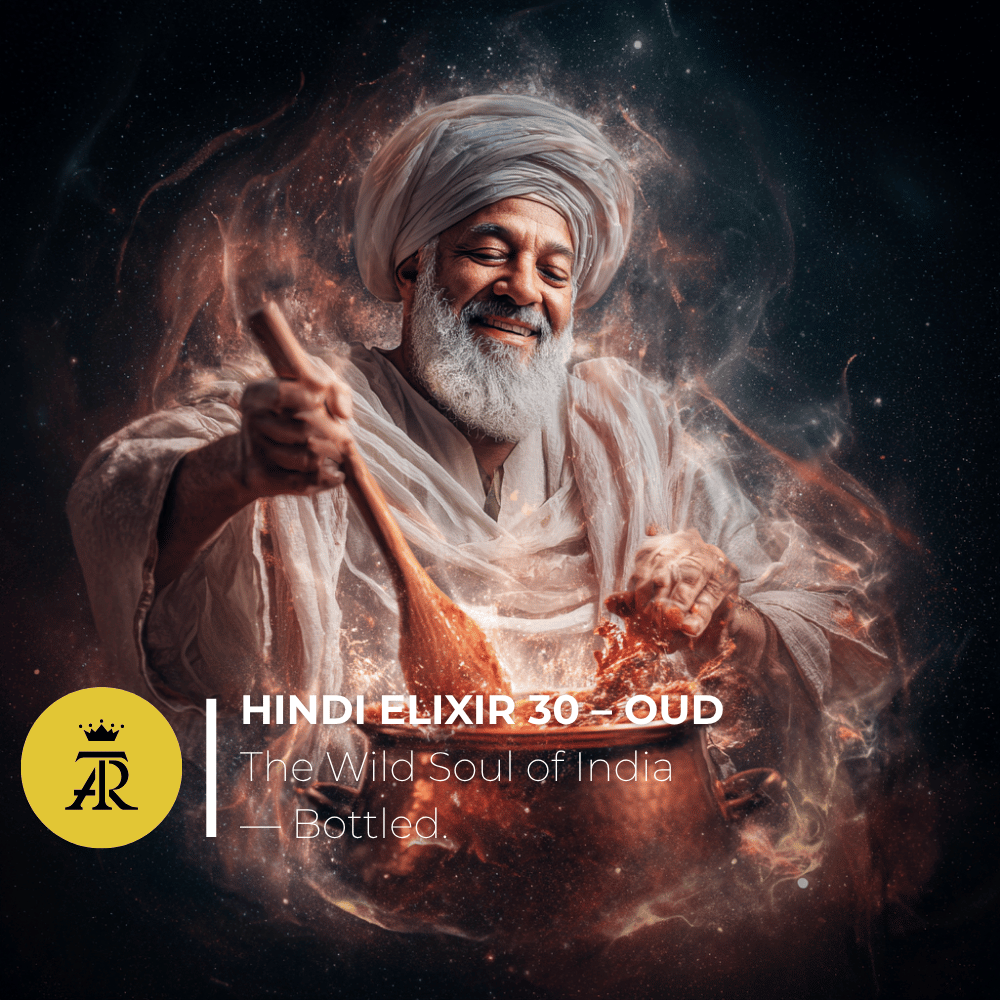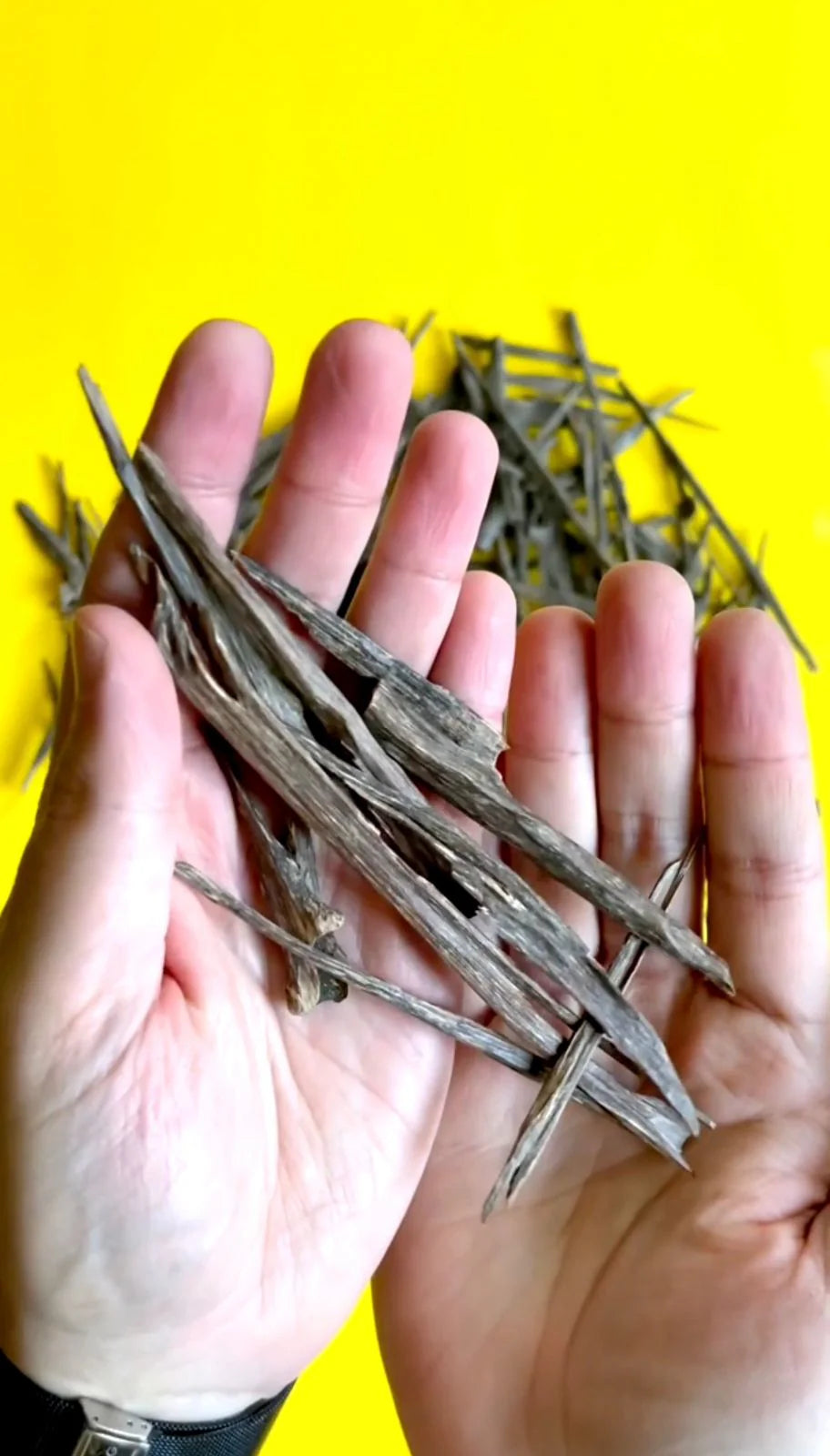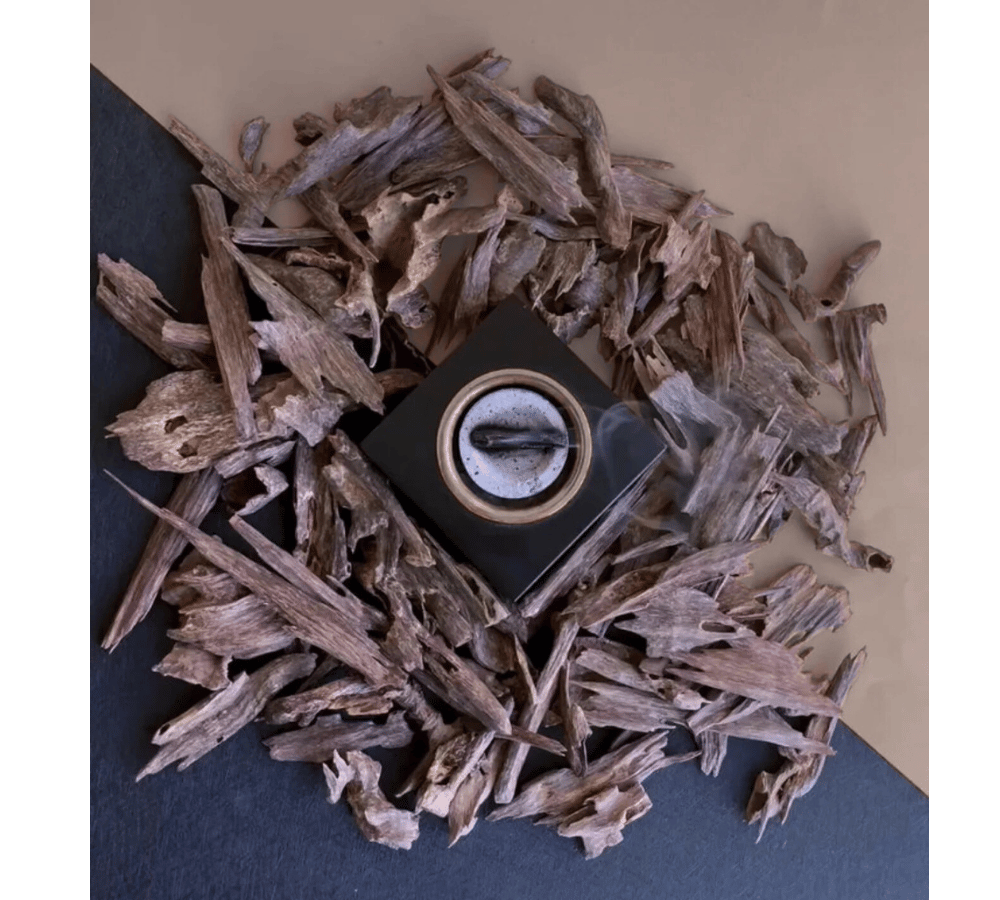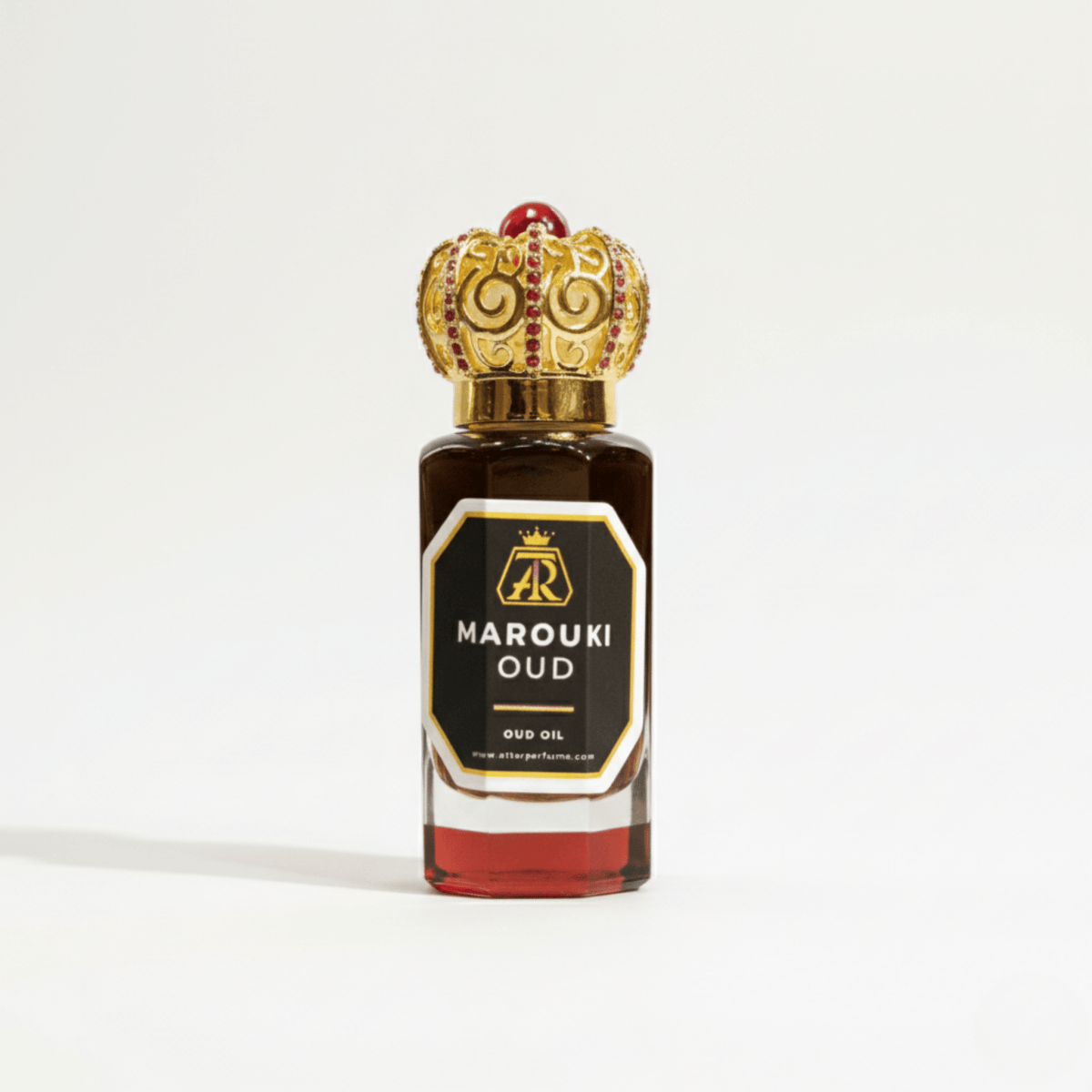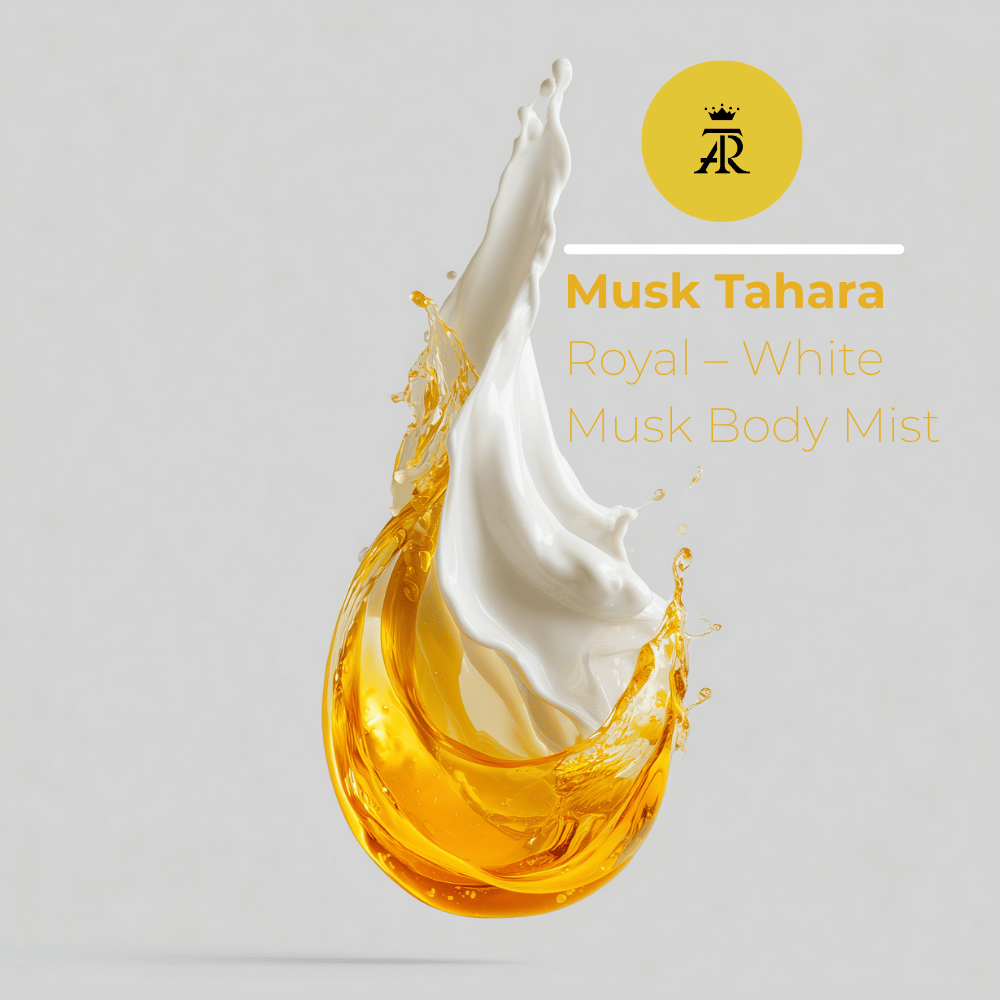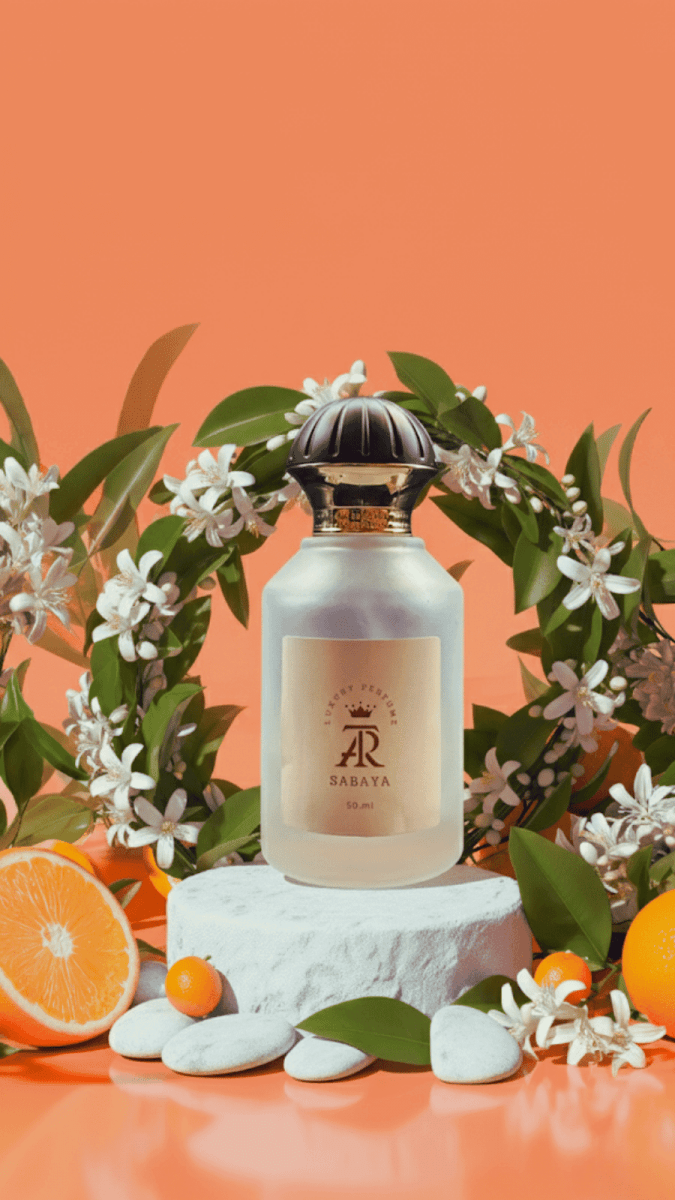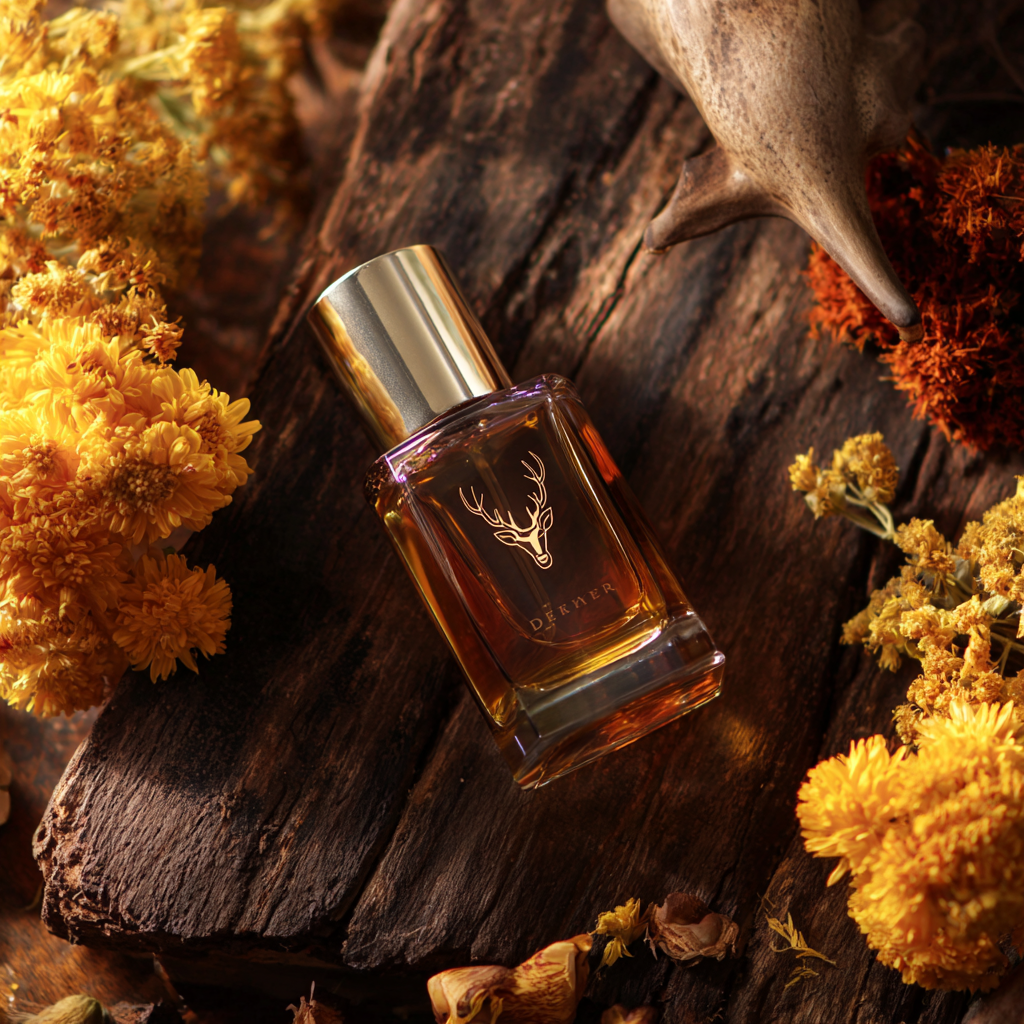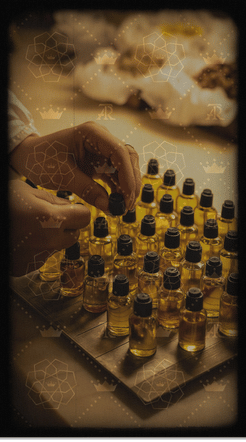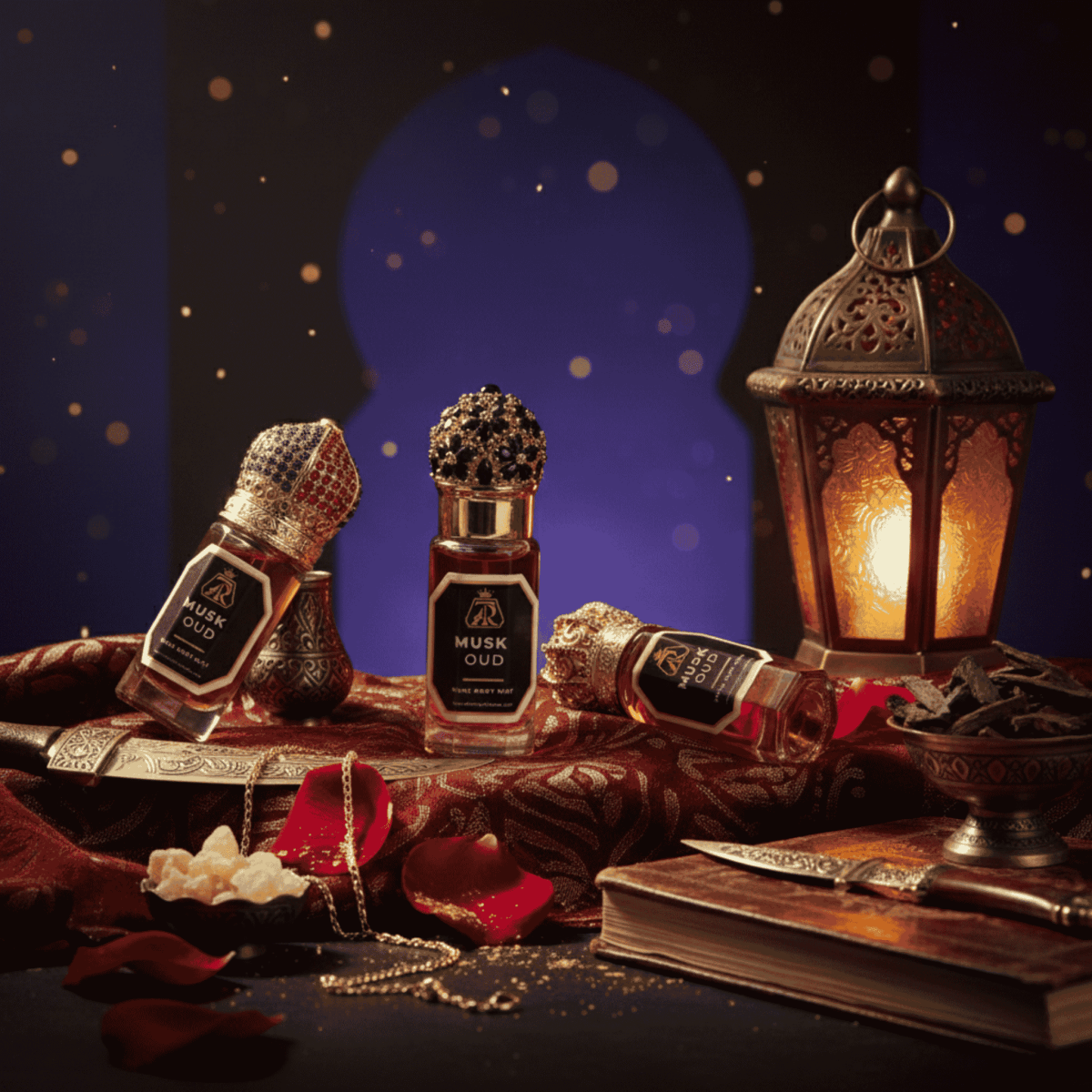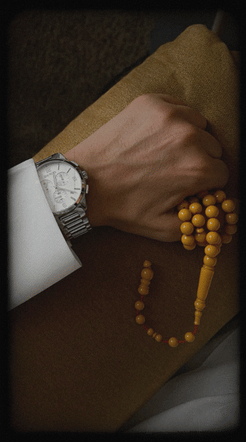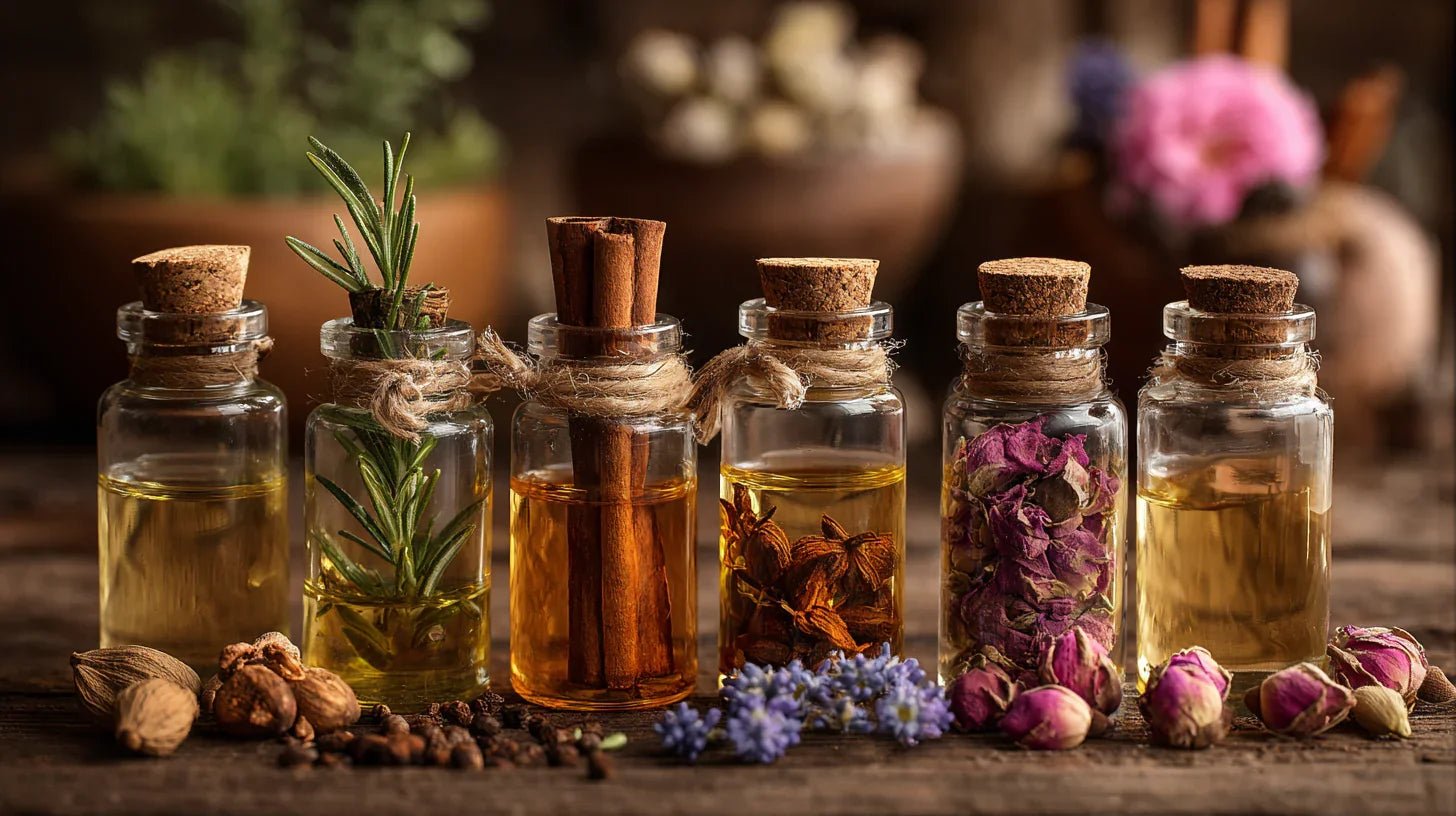The Complete Guide to Blending Oud Oil: Master Formulas & Professional Techniques
📑 Table of Contents
- Why Blend Oud Oil? The Art and Science
- The Historical Context of Oud Blending
- 1. Blending Old and New Oud Oils
- 2. Softening Sharp Oud Oils
- 3. Complex Multi-Oud Blends
- 4. Adding Musk and Ambergris
- 5. Adding Florals and Other Ingredients
- 6. Tools, Environment, and Aging
- 7. Practical Distribution in Real Blends
- 8. Testing and Evaluating Your Blends
- 9. Troubleshooting Common Problems
- 10. Market Value and Selling Your Blends
- Common Mistakes to Avoid
Why Blend Oud Oil? The Art and Science Behind Custom Fragrances
If you've ever purchased a single-origin oud oil and wondered why professional perfumers' creations smell so much more complex and refined, the answer lies in blending. While pure single-origin oud oils are beautiful in their own right, they represent only one note in a symphony. Blending is what separates amateur collectors from master perfumers.
The practice of blending oud oil serves multiple purposes, each contributing to a superior final product:
- Balance projection and longevity by combining oils with different volatility rates and molecular weights
- Create signature scents that cannot be replicated or found anywhere else in the world
- Soften sharp notes that might be too intense for daily wear or Western preferences
- Layer complexity that evolves over 12-24 hours on skin, telling a story through scent
- Increase value as expertly blended oud oils command premium prices ($300-$5,000+ per bottle)
- Maximize investment by using small amounts of rare, expensive oils with more accessible varieties
- Compensate for weaknesses in individual oils while highlighting their strengths
Think of oud blending like composing music. A single instrument can be beautiful, but an orchestra creates depth, emotion, and complexity that a solo performance cannot achieve. Each oud variety is an instrument—Hindi is the powerful brass section, Malaysian is the deep bass, Cambodian is the sweet strings, and fixatives like musk are the percussion that holds everything together.
The Historical Context of Oud Blending
Oud blending is not a modern invention—it's an art form that dates back over a thousand years to the Islamic Golden Age. The legendary Arab chemist Jabir ibn Hayyan (721-815 CE), considered the father of chemistry, documented distillation and blending techniques in his manuscripts. His contemporary, the philosopher Al-Kindi (801-873 CE), wrote "The Book of Perfume Chemistry and Distillation," which included over 100 perfume formulas, many featuring blended oud.
These early perfumers discovered what modern chemistry now confirms: certain aromatic compounds interact synergistically, creating fragrances greater than the sum of their parts. The famous "Ab Samaka" style—blending sharp Hindi oud with incense-rich Malaysian oud—was refined in the royal courts of Baghdad and Damascus, where perfumers competed to create the most sophisticated blends for caliphs and sultans.
Trade routes connecting Arabia, Persia, India, and Southeast Asia allowed perfumers to access oud from different regions, leading to the development of blending as an essential skill. By the Ottoman era, master perfumers guarded their formulas as closely as alchemists guarded their secrets, passing them only to trusted apprentices.
Today, the most prestigious perfume houses in Dubai, Riyadh, and Kuwait employ master blenders whose families have perfected signature formulas over generations. These blends sell for $1,000-$10,000+ per tola (approximately 12ml), with some vintage blends appreciating in value like fine wine. Now, with the knowledge in this guide, you can create similar quality at home.
1. Blending Old and New Oud Oils: The Foundation Technique
This is where every blending journey should begin. Understanding how aged oud oil differs from freshly distilled oil is crucial to creating balanced fragrances that perform well throughout the day.
The Science of Aging: What Actually Happens
Old oud oil (5-30+ years aged) undergoes a remarkable chemical transformation during storage. When oud is first distilled, it contains a high percentage of volatile sesquiterpenes and chromones—these are the compounds responsible for sharp, immediate projection. Over time, through a process called oxidation and polymerization, these volatile compounds slowly transform into heavier molecules.
The result? The sharp, sometimes harsh top notes mellow into smooth, refined complexity. The color deepens from golden amber to dark ruby-brown or even black. The viscosity increases—aged oud becomes thick, syrupy, clinging to the bottle. Most importantly, the molecular structure changes, creating oils with exceptional longevity—often lasting 24-48 hours on skin with remarkable tenacity.
However, this transformation comes with a trade-off. Aged oud sacrifices projection. Those volatile compounds that evaporated quickly and filled the room? They're now heavy, non-volatile molecules that stay close to the skin, creating an intimate aura rather than broadcasting across a space.
New oud oil (freshly distilled to 2 years old) bursts with vibrant, powerful projection. One drop can perfume an entire room for hours. The scent is brighter, sharper, more immediate—sometimes even slightly harsh or medicinal. Fresh oud contains high levels of volatile compounds that evaporate quickly, creating strong sillage (the scent trail you leave behind) but shorter longevity—typically 8-12 hours on skin.
The color is lighter—golden, honey-toned, or light brown. The consistency is thinner, more fluid. On skin, fresh oud makes an immediate impact but fades relatively quickly compared to aged varieties.
The Perfect Balance: Old Meets New
Standard Balanced Blend:
Result: Balanced projection and longevity—the best of both worlds. First 6-8 hours: strong, room-filling presence. Hours 8-24: intimate, skin-close warmth.
Longevity-Focused Blend:
Result: Maximum longevity (24-36 hours) with adequate projection for special occasions or professional settings where you want subtle but lasting presence.
Projection-Focused Blend:
Result: Powerful projection for events, parties, or when you want to make a bold statement. Longevity: 10-16 hours.
Real-World Application Examples
Case Study #1: The Office-Appropriate Blend
Goal: Create a professional oud suitable for corporate environments
Formula: 70% aged Cambodian oud (12 years) + 30% fresh Cambodian oud (1 year)
Result: Opens with subtle sweetness that doesn't overpower colleagues, develops into warm, comforting base that lasts through meetings and presentations. Projects within 2-3 feet—noticeable in elevators and close conversation, but not overwhelming in conference rooms.
Cost: $85 for 6ml blend | Market Value: $180-250
Case Study #2: The Evening Event Blend
Goal: Create a bold, memorable scent for social occasions
Formula: 35% aged Hindi oud (15 years) + 65% fresh Hindi oud (2 years)
Result: Powerful medicinal opening that announces your presence, mellows into smooth leather and spice. Projects across rooms for first 5 hours, then stays close for another 12. Gets compliments but can be polarizing—not for everyone.
Cost: $195 for 6ml blend | Market Value: $400-600
2. Softening Sharp Oud Oils: Taming the Beast
Hindi oud oil from India is legendary for its powerful, animalic, almost medicinal sharpness that connoisseurs call "zakhma" (Arabic for "wound"). Burmese, Laotian, and Vietnamese ouds share this characteristic intensity—they're bold, uncompromising, sometimes bordering on aggressive. While prized by collectors and experienced oud lovers, these sharp ouds can be overwhelming for daily wear, for Western noses unfamiliar with traditional oud, or for anyone seeking a more balanced fragrance.
Sharp ouds are rich in phenolic compounds—the same chemical family found in antiseptics, which explains their medicinal character. These phenols create that distinctive "barnyard," leathery, almost offensive quality that either captivates or repels. There's rarely middle ground with pure sharp oud.
The Solution: Incense Oud Balancing
The secret to softening sharp oud without losing its character is blending it with incense-rich oud oils. Malaysian oud, Brashine oud, and South Thai oud naturally contain high levels of sesquiterpenes and chromones that create smoky, resinous, church-like incense notes. When combined with sharp oud, something magical happens—the aggressive edges soften while the depth intensifies.
This isn't dilution—it's transformation. The incense compounds literally wrap around the sharp phenolic molecules, creating a new aromatic profile that's simultaneously powerful and wearable.
Classic Sharp-Softening Formula:
- 40% Hindi Oud (or other sharp variety like Burmese or Laotian)
- 60% Malaysian/Brashine Oud (incense-rich variety)
Result: The famous "Ab Samaka" style—balanced power with incense depth, wearable yet distinctive. This blend has been sold in the souks of Dubai and Riyadh for centuries, commanding premium prices.
Aging Recommendation: Minimum 14 days, ideal 3-6 months for full integration
Why This Works: The Chemistry Explained
Sharp ouds are rich in phenolic compounds (guaiacol, chavicol, eugenol) that create that medicinal, intense character. These are small, highly volatile molecules that project strongly and create immediate impact—but they can be harsh.
Incense ouds contain higher ratios of chromones (like eremophilone) and larger sesquiterpenes. These compounds have a different volatility profile—they evaporate more slowly, creating that smoky, resinous, temple-incense character.
When blended, these chemical families interact. The larger incense molecules envelop and moderate the sharp phenolics during evaporation. On skin, instead of getting an immediate blast of harsh phenols, you experience a gradual release moderated by the incense compounds. The result is complexity without aggression—power with refinement.
Professional perfumers in Dubai and Riyadh have used this technique for decades to create "oud mukhallat" (mixed oud) that sells for $300-$1,000+ per tola (approximately 12ml). These signature house blends often use this exact sharp-incense foundation, then add other elements for uniqueness.
Advanced Sharp-Softening Variations
The "Royal Court" Blend:
- 30% Hindi Oud (sharp)
- 50% Malaysian Oud (incense)
- 20% Cambodian Oud (sweet smoothness)
This adds a sweet Cambodian component that further softens while adding honey-like smoothness. Popular in royal families of the Gulf.
3. Complex Multi-Oud Blends: The Signature Formula
This is where true mastery begins—and where amateur blenders often fail. Multi-oud blending combines three or more different oud varieties to create symphonic complexity that evolves over 24+ hours on skin, revealing different facets at different stages. These blends are what separate amateur hobbyists from professional perfumers whose creations sell for thousands of dollars.
The challenge? Each oud oil has its own character, volatility, intensity, and chemical composition. Combine them randomly, and you get a muddy, disjointed mess. Follow the principles outlined here, and you create magic.
Understanding the Three Oud Categories in Depth
Sharp Ouds (20-30% of blend):
Hindi (India): The king of sharp ouds. Medicinal, powerful, animalic, with barnyard leather notes. Rich in phenolic compounds. Projects strongly but can be overwhelming. Age improves it dramatically.
Burmese (Myanmar): Barnyard, leathery, earthy with less medicinal character than Hindi. Often has surprising sweetness underneath the sharp exterior. Very popular in blending.
Laotian: Green, herbal sharpness. Less animalic than Hindi, more vegetative. Unique character that adds interesting dimension.
Vietnamese: Bright, piercing, cooling sharpness. Extremely potent—use sparingly (3-5% maximum). Can dominate entire blends if overused.
Incense Ouds (30-40% of blend):
Malaysian: The classic incense oud. Smoky, resinous, temple-like. Deep woody base with church incense character. Forms the backbone of most professional blends.
Brashine: Similar to Malaysian but denser, darker, more mysterious. Less sweet, more purely incense-focused. Provides grounding.
South Thai: Church incense meets sweet woods. Lighter than Malaysian, more accessible. Good for beginners.
Aged Papua: Some varieties develop strong incense character with aging. Can be used in incense category if properly aged.
Sweet Ouds (Remainder to 100%):
Cambodian: The gold standard of sweet oud. Honey, caramel, dried fruits with smooth woody base. No harshness. Universally loved. Perfect for filling remaining percentage in blends.
Trat (Thai-Cambodian border): Fruity, sweet, very accessible. Less complex than Cambodian but excellent for adding sweetness without weight.
Younger Burmese: Surprisingly, some young Burmese ouds have candy-like sweetness before developing sharp character. Excellent in sweet category.
Certain Malaysian grades: Some Malaysian distillations have pronounced sweetness alongside incense. Can be used in either category depending on the batch.
The Master Formula Explained
Professional 3-Category Blend (The Industry Standard):
Why these exact percentages? Refined over centuries by master perfumers through trial and error. This ratio creates:
- Enough sharp character for depth and power (25%)
- Strong incense foundation for structure (35%)
- Sufficient sweetness for wearability (40%)
The Logic Behind the Ratios
Why sharp oud must never dominate (25% maximum): Sharp oud is like chili peppers in cooking. A little adds exciting heat and complexity. Too much makes the dish inedible. At 25%, sharp oud provides character and depth without overwhelming. Push it to 35-40%, and most people will find the blend unwearable—it becomes a specialist item rather than a versatile fragrance.
Why incense oud forms 35% (the sweet spot): This is your foundation, your bass line, your structural support. Incense oud provides the deep, grounding woody-smoky character that people associate with premium oud. At 35%, it's substantial enough to support the composition without drowning out the other elements. Less than 30%, and the blend feels thin, lacking depth. More than 40%, and it becomes too heavy, too smoky, losing complexity.
Why sweet oud takes the largest share (40%): Sweet oud is your accessibility factor. It makes your blend something people want to smell again and again. It softens the sharp, complements the incense, and creates a fragrance that's complex yet approachable. The 40% allocation ensures the blend remains wearable while still sophisticated.
Practical Examples: Creating Professional Blends
Example #1: The $500 "Signature House" Blend
Formula for 100ml:
| Oil | Amount | Category | Cost |
|---|---|---|---|
| Hindi Oud (10 years aged) | 25ml | Sharp | $150 |
| Malaysian Oud (premium grade) | 35ml | Incense | $140 |
| Cambodian Oud (first distillation) | 40ml | Sweet | $180 |
| Total | 100ml | $470 |
Your Cost: $470 in materials + your time and expertise
Market Value: $800-$1,200 (if properly aged and presented)
Profit Margin: 70-155% if selling
4. Adding Musk and Ambergris: The Secret Fixatives
Natural musk and ambergris are the perfumer's secret weapons—the ingredients that separate good blends from legendary ones. These animal-derived materials (or their ethical/synthetic alternatives) act as fixatives, extending longevity, adding depth, and creating that mysterious "X-factor" that pure oud alone cannot achieve.
In high-end Arab perfumery, no serious oud blend is complete without fixatives. They're the invisible thread that ties everything together, the magic ingredient that makes people ask, "What are you wearing? I can't quite place it, but it's incredible."
The Sacred 3% Rule
Never exceed 3% musk or ambergris in your total blend. This might seem like a tiny amount—just 3ml in a 100ml blend—but these materials are extraordinarily powerful. Their potency isn't in volume; it's in their unique ability to modulate and extend other aromatic compounds.
What does 3% musk or ambergris do in a blend?
- Extends longevity by 4-8 hours: Fixatives slow the evaporation of volatile compounds, making the entire blend last significantly longer on skin
- Adds skin-like warmth and sensuality: Creates that intimate, second-skin quality that makes fragrances feel personal
- Creates magnetic pull: People lean in closer without knowing why—the fixative creates subconscious attraction
- Unifies disparate notes: Acts as the glue binding sharp, incense, and sweet ouds into a cohesive whole
- Adds "radiance": Creates a subtle glow or shimmer to the fragrance, making it feel more luxurious
- Improves with age: Fixatives help blends mature gracefully, improving over months and years
Musk vs. Ambergris: Which to Choose?
Natural Musk (Deer Musk)
Traditionally sourced from musk deer (now heavily regulated), natural deer musk is dark, animalic, intensely powerful. Modern alternatives include:
- Synthetic musks: Galaxolide, Helvetolide, Muscone - clean, legal, effective
- Plant musks: Ambrette seed, angelica root - natural but less powerful
- Ethical animal musks: Some suppliers offer cruelty-free extraction methods
Musk Character: Warm, intimate, skin-like, slightly animalic, powdery-clean, sensual
Use musk when: You want your blend to feel intimate, second-skin, subtly seductive. Perfect for personal fragrances meant to be discovered in close proximity.
Natural Ambergris
Ocean-aged treasure from sperm whales (naturally expelled, collected from beaches), ambergris is gray, waxy, and incredibly valuable. Genuine ambergris can cost $20-$50+ per gram.
Ambergris Character: Marine, slightly salty sweetness, ethereal, uplifting, diffusive, creates "float"
Use ambergris when: You want your blend to have mysterious projection, to create an aura that surrounds you. Ambergris makes oud "float" in the air around you rather than sitting heavy on skin.
Professional Blend with Musk Fixative:
- 25% Sharp Oud (Hindi)
- 35% Incense Oud (Malaysian)
- 37% Sweet Oud (Cambodian)
- 3% Natural or Synthetic Musk
Result: Intimate, sensual blend with 20-30 hour longevity. Stays close to skin but lasts all day and into the next morning.
Professional Blend with Ambergris Fixative:
- 25% Sharp Oud (Burmese)
- 35% Incense Oud (Brashine)
- 37% Sweet Oud (Cambodian)
- 3% Natural Ambergris (ocean-aged)
Result: Mysterious, floating projection with ethereal quality. People smell it before seeing you enter the room. 24-36 hour longevity with excellent sillage.
5. Adding Florals and Other Ingredients: Proceed with Caution
This is where many amateur blenders make their most expensive mistakes. The temptation to add rose, jasmine, sandalwood, saffron, or spices is strong—these ingredients are beautiful, and in small amounts, they can enhance oud. However, non-oud ingredients behave differently than oud during aging, and they can destabilize blends that would otherwise improve for years.
The 1% Golden Rule and Why It Exists
Never exceed 1% of any non-oud ingredient in blends you plan to age or store for more than 6 months. This rule exists because:
- Oxidation rates differ: Rose oxidizes faster than oud, creating off-notes over time
- Chemical incompatibility: Some floral compounds react with oud's chromones and sesquiterpenes, causing cloudiness, separation, or smell changes
- Balance shifts: What smells perfect today might be rose-dominant in six months as compounds interact
- Oud's character changes: The complex evolution that makes aged oud precious can be interrupted or altered by foreign compounds
- Professional standards: Master perfumers keep oud blends pure for aging, adding florals only to immediate-use products
The Taif Rose Exception
Pure Taif rose attar from Saudi Arabia's highlands is the one exception to the 1% rule—but only under very specific conditions:
Winter short-term blends: During cooler months (October-March), for blends intended to be sold or used within 3-6 months, you can add 3-4% Taif rose to oud. The result is the famous "Oud Rose" style beloved in Arab perfumery—the sweetness of rose enhancing oud's woody depth.
Why the exception? Taif rose's chemical composition is uniquely compatible with oud for short periods. The rose's phenethyl alcohol and citronellol compounds complement rather than clash with oud's chromones. However, after 6+ months, even Taif rose begins altering the blend unpredictably.
Oud Rose Blend (Winter, Short-Term Use):
- 30% Sharp Hindi Oud
- 30% Incense Malaysian Oud
- 36% Sweet Cambodian Oud
- 4% Pure Taif Rose Attar
Use within: 6 months for optimal character
Result: Luxurious, romantic, feminine-leaning oud with rose sweetness. Very popular as wedding or special occasion scent.
Safe Non-Oud Additions (at 1% or less)
If you must add florals or other ingredients, keep them at 1% maximum and understand you're sacrificing some of the long-term aging potential:
- Taif Rose (1%): Adds feminine elegance, brightness, romantic quality
- Jasmine Absolute (0.5-1%): Creates seductive, intoxicating headspace. Use sparingly—jasmine is overpowering
- Sandalwood (1%): Enhances creaminess, adds smooth woody support. Indian sandalwood works best
- Saffron Tincture (0.5%): Adds luxurious, leathery spice. Medieval Persian signature. Extremely potent
- Frankincense (1%): Amplifies incense character, adds sacred temple quality
- Vetiver (0.5%): Adds earthy, rooty depth. Use Haitian or Javanese vetiver
6. Tools, Environment, and Aging: The Technical Details Matter
Essential Equipment for Serious Blending
Precision Scale (0.01g accuracy): This is absolutely non-negotiable for consistent results. Jewelry scales or laboratory scales that measure to the hundredth of a gram allow you to work with precise ratios. Eyeballing or using volume measurements will result in inconsistent blends that you cannot replicate. Expect to spend $20-$50 for a reliable scale. This is your most important tool.
Glass Bottles with Tight Seals: Only use amber or cobalt glass bottles. Clear glass allows UV light penetration, which degrades oud over time. Ensure caps seal completely—even small amounts of evaporation will alter your ratios. Roller bottles work well for testing, but screw-cap bottles are better for long-term storage.
Pipettes or Precision Droppers: For transferring oils without waste or cross-contamination. Disposable plastic pipettes (1ml or 3ml) are inexpensive and prevent mixing oils. Use one pipette per oud type.
Mixing Container: Small glass beakers or laboratory-grade containers for initial blending before bottling. Avoid plastic—oud oils can leach chemicals from plastic.
Labels and Markers: Essential for tracking batches. Include: blend name, date mixed, ratios used, source of each oil, and any observations.
Notebook or Digital Log: Document everything. Professional perfumers maintain detailed logs of every blend—ratios, dates, observations, aging notes, test results. You'll want to remember which experiments succeeded.
The Perfect Blending Environment
Temperature and humidity dramatically affect blending success and aging potential. The ideal conditions mirror those used by professional ateliers in Dubai and Grasse:
Temperature: 20-25°C (68-77°F) is optimal. Warm enough for oils to flow and mix properly, but not so hot that volatile compounds evaporate prematurely. Avoid blending in cold rooms (oils become viscous and don't integrate well) or hot spaces (accelerates unwanted oxidation).
Humidity: 40-60% relative humidity prevents issues with moisture absorption or excessive dryness. Very dry environments can cause evaporation through seals. Very humid environments can introduce moisture contamination.
Lighting: Indirect natural light or warm artificial light during blending. Avoid direct sunlight—UV rays alter chemical composition within hours.
Air Circulation: Good ventilation during mixing, but avoid air conditioning blowing directly on your work area. Sudden temperature changes affect integration.
Cleanliness: Work on clean surfaces. Any contaminants (dust, food residue, other fragrances) can affect your blend. Professional perfumers work in dedicated fragrance rooms.
The Aging Process: From Chaos to Harmony
This is where patience separates good blenders from masters. Aging is not optional—it's when separate oils become a unified fragrance.
Day 1 (Mixing Day): Carefully measure each oil according to your formula. Pour into mixing container. Gently stir or swirl (don't shake vigorously—this introduces air bubbles). Transfer to storage bottle. Label immediately. The blend at this stage is disjointed—you can smell individual oils competing rather than harmonizing.
Days 2-3: The oils are still physically and chemically separate. If you test on skin now, you'll experience each note distinctly—first the sharp, then the incense, then the sweet, rather than a unified composition. Resist the urge to test. Be patient.
Days 4-7: Integration begins on a molecular level. Shake gently once per day to encourage mixing. The sharp edges start softening. Different aromatic compounds begin interacting. This is when blending truly begins, even though you're not actively doing anything.
Days 8-14: The blend "marries." This is your minimum aging time before evaluation. Test on skin at day 9 or 10. You should notice that instead of distinct sequential notes, you're experiencing a cohesive fragrance with complexity. If it still smells disjointed, wait another week.
Weeks 3-4: The blend settles into its character. This is when you can make final judgments about success or needed adjustments.
Months 1-6: Continued improvement. The blend becomes smoother, more refined, more cohesive. Sharp notes that seemed too prominent at 2 weeks have mellowed perfectly by 3 months. This is when you discover whether your formula was truly successful.
Years 1-5+: For collectors and investors, properly stored blends improve for years, developing incredible depth, smoothness, and value. Some blends double or triple in value over 5 years as the oud continues maturing.
7. Practical Distribution in Real Blends: Advanced Techniques
Working with Extremely Sharp or Potent Oils
Not all oils within a category have equal strength. Some oud oils are so potent that normal ratios don't apply. Understanding how to adjust for intensity is what separates experienced blenders from novices.
Vietnamese oud, for example, can dominate an entire blend at just 3-5%. Its piercing, cooling sharpness is so powerful that using the standard 25% allocation would create an unwearable fragrance. Similarly, some aged Hindi ouds develop such intensity that 15% feels like 30%.
Handling Ultra-Sharp Oud (100ml total blend):
- 3ml Vietnamese Oud (extremely sharp—just 3%)
- 22ml Hindi Oud (moderately sharp—completing the 25% sharp category)
- 35ml Malaysian Oud (incense category—standard 35%)
- 40ml Cambodian Oud (sweet category—standard 40%)
Key insight: Total sharp category still equals 25% (3ml + 22ml = 25ml), but it's distributed between two oils to prevent Vietnamese from overwhelming everything.
Balancing Oils of Different Viscosities
Oud oils vary dramatically in thickness. Fresh oils are thin and fluid. Aged oils can be thick as honey or even semi-solid at room temperature. Very old ouds (30+ years) might require gentle warming just to pour.
When blending oils of different viscosities:
- Warm thick oils slightly (hand warmth or water bath to 30-35°C) before mixing
- Add thin oils to thick oils (pour fluid into viscous, not vice versa)
- Stir more thoroughly—viscosity differences slow integration
- Allow extra aging time (add 1-2 weeks minimum)
8. Testing and Evaluating Your Blends: The Professional Method
Professional perfumers don't just smell a blend and declare it finished. They follow rigorous testing protocols to evaluate projection, longevity, development, and wearability.
The Proper Testing Protocol
Step 1 - Paper Strip Test (Day 7-10 after mixing): Apply one drop to a perfume blotter or coffee filter strip. Wave gently near nose—don't press to nose. Evaluate opening notes. Set aside for 1 hour, 4 hours, and 8 hours. Does it remain interesting throughout?
Step 2 - Wrist Test (Day 10-14): Apply small amount (1-2 drops) to clean, unscented wrist. Don't rub wrists together—this breaks molecules. Evaluate every 2 hours for first 12 hours, then check at 24 hours. Document how the scent evolves.
Step 3 - Full Wearing Test (Day 14+): Apply as you would normally wear it. Apply to all pulse points. Go about your day. Notice how it reacts to body heat, movement, temperature changes. Get feedback from others (crucial—your nose fatigues to your own scent).
What to evaluate:
- Opening (0-1 hour): Is it pleasant or harsh? Too strong or too weak?
- Development (1-6 hours): Does it evolve interestingly or become boring?
- Heart (6-12 hours): Is there a clear identity or does it get muddy?
- Longevity (12-24+ hours): Does it last? Does it maintain interest?
- Projection: Can others smell it? At what distance?
- Sillage: Does it leave a pleasant trail?
9. Troubleshooting Common Problems
Problem: Blend smells muddy or indistinct
Cause: Too many oils competing, no clear structure, insufficient aging
Solution: Simplify formula. Use fewer oils but in clearer ratios. Age another 2-4 weeks.
Problem: One note dominates everything
Cause: Used too much of a potent oil (likely Vietnamese or very aged Hindi)
Solution: Dilute blend by adding more of the other categories. Take notes for next batch to reduce dominant oil.
Problem: Blend has no longevity
Cause: Too much fresh oil, insufficient aged oil, no fixative
Solution: Add 10-20% aged oud of same origin, or add 2-3% musk/ambergris fixative.
Problem: Blend has no projection
Cause: Too much aged oil, insufficient fresh oil
Solution: Add 15-30% fresh oud to increase volatility and projection.
Problem: Blend separated or became cloudy
Cause: Contamination, moisture intrusion, or incompatible added ingredients
Solution: If caught early, filter through coffee filter. Prevent by using only glass, keeping moisture out, avoiding incompatible additives.
10. Market Value and Selling Your Blends
Well-crafted oud blends can command significant prices. Understanding market values helps whether you're creating for personal use or considering sales.
Pricing Your Blends
Cost-Plus Method: Calculate total cost of oils used, then multiply by 2-4x for retail price. A blend costing $500 in materials might retail for $1,000-$2,000 depending on packaging and marketing.
Market Comparison Method: Research what similar blends sell for in Middle Eastern perfume shops or online. Adjust based on your blend's quality and uniqueness.
Age Premium: Blends aged 2+ years command 30-50% premiums. Blends aged 5+ years can command 100%+ premiums.
Common Mistakes to Avoid
- Using too much sharp oud: Keep it at 25% maximum, 30% absolute ceiling
- Testing too early: Wait minimum 7 days, ideally 14 days before evaluation
- Not documenting formulas: You'll forget what you did. Write everything down.
- Blending vastly different ages: Don't mix 1-year-old with 30-year-old unless you really know what you're doing
- Adding too many florals: Remember the 1% rule for long-term storage
- Using plastic containers: Always glass. Always.
- Skipping fixatives: That 3% musk or ambergris transforms blends
- Not adjusting for oil intensity: Vietnamese at 25% will destroy a blend
- Improper storage: Keep away from heat, light, air
- Giving up too quickly: Some blends need months to reveal their true character
Final Thoughts: Your Journey to Master Blender
Blending oud oil is both rigorous science and intuitive art. The ratios and techniques in this 4,000+ word guide are your foundation—proven formulas used by professionals creating luxury perfumes worth thousands of dollars. But true mastery comes from experimentation, patience, documentation, and developing your own "nose" for what works.
Start simple. Master the old-new balance before attempting sharp-incense-sweet formulas. Document everything. Be patient with aging. Test thoroughly. Learn from both successes and failures.
In six months of dedicated practice, you'll be creating blends that rival commercial offerings. In two years, you might be developing signature creations that people seek out specifically. In five years, you could be aging blends that appreciate in value like fine wine.
The most important lesson? Once you understand these principles, you can intentionally break them to discover new territory. Some of history's greatest perfumes came from "mistakes" that became masterpieces. But you must know the rules before you can successfully break them.
Now go create something extraordinary. The world of oud blending awaits.
🧪 Interactive Oud Oil Blending Calculator
Use this professional calculator to create your custom oud blend formula with precise measurements and cost analysis.
1. Set Your Total Blend Volume
2. Sharp Oud (20-30% recommended)
Cost: $
3. Incense Oud (30-40% recommended)
Cost: $140
4. Sweet Oud (Remaining %)
Cost: $180
5. Optional Fixative (Max 3%)
📊 Your Custom Blend Formula
Your Formula:
✨ AI-Powered Blend Suggestion Generator
Not sure where to start? Let our algorithm suggest a professional blend based on your preferences.
Start Your Blending Journey with Premium Oud Oils
Ready to create your own signature oud oil blends? Explore AttarPerfume's collection of pure, authenticated oud oils from Cambodia, India, Malaysia, and beyond. Each oil comes with origin documentation, purity certificates, and aging information—perfect for serious blending.
Shop Pure Oud Oils for Blending →Free shipping on orders over $99 | Satisfaction guaranteed | Expert support available
